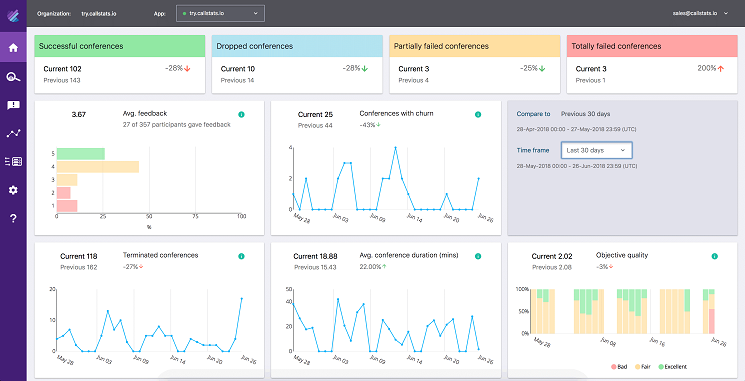Too many enterprises are penny wise and pound foolish when it comes to voice quality. For instance, they pay a contact center agent $25/hour (all-in costs including salary, benefits, office space, IT) and then try and save 10 cents/hour on voice spending. Poor voice quality leads to a suboptimal experience, resulting in fewer sales and a lower Net Promotor Score. Nothing is worse than a conversation that sounds like the can phone I made as a kid.
WebRTC adds a new dimension to the voice quality mission. It is appearing in new IVR applications, omnichannel contact center desktops, and mobile applications. While WebRTC features new technologies for delivering high-quality experiences over a wide range of network conditions, voice communications remain sensitive to the devices, codecs, and networks in use.
I recently had the pleasure of talking with Varun Singh, CEO of
callstats.io, about monitoring and fixing voice quality in WebRTC. I met Varun five years ago when I was at Gartner, and since business-grade voice quality is an important topic (some say pet peeve) for me, I reached out to him. It has been fun seeing WebRTC and callstats.io grow over the past few years. This is what we discussed.
A great voice user experience starts with:
- Conversation Dynamics -- Having a large number of participants in an interactive dialog can make it difficult to prevent people from talking over one another. How many times in a call does someone have to say, “No, you go ahead?” A good quality conference produces natural conversation dynamics. But, if one person on a multiparty conference is attached to a poor network, they can degrade the experience for all participants. This is why the next few items on this list are important.
- Timeliness -- Keep the round-trip time (RTT) low, as I wrote about in a November 2018 post, by setting a design goal of having users within 25ms of the communications platform that they’re using. Callstats.io can monitor the metrics that are important to timely conversation streams, including RTT, loss, and jitter.
- Annoyances -- Setting voice levels based on how loud or soft someone speaks, echo or feedback, not recognizing the person’s voice, and voice clipping can all result in people having to repeat themselves and listeners having to work really hard to follow the conversation.
- Effects of Transcoding -- While WebRTC supports the Opus codec, this isn’t always the best codec to use despite its robustness. For example, when calls are coming in on a SIP trunk using G.711, the additional transcoding to Opus results in call degradation.
To ensure the best voice user experience, callstats.io provides:
- Troubleshooting Tools -- These passively capture real-time call metrics from browser endpoints and network devices to monitor quality and detect problems. Callstats.io correlates data from each participant in a call and visualizes it in a way that enables the user to identify problems quickly. Users can monitor top-level service metrics and easily drill down to individual calls. Artificial intelligence and machine learning automatically identify the root cause of problems and long-term trends.
- Synthetic Media Generation -- It uses the WebRTC API to send a media file to the far end and measure how it compares against the original. The callstats.io Smart Connectivity Test is a much more robust and accurate way to measure anticipated quality for a given network connection than just a mean opinion score. With this data, you can tune the voice systems for codec in use, length of jitter buffer, TURN server selection, network pipe, and so on.
- Real-Time API -- When incorporated into agent desktops and network management platforms, these APIs provide the ability to monitor voice quality in real-time. The API can be invoked immediately prior to initiating/answering a call so user expectations can be set for voice quality. This is useful for mobile and remote workers who may be connecting to wireless networks.
- Global Call Quality Baseline -- Inter-geography WebRTC test calling can help inform what a user is getting and whether that is above or below the mean score.
- Benchmarking -- Global maximums and minimums enable customers to leverage the wealth of data collected by callstats.io for all its customers and use it to compare with the performance of their own service.
Call quality is of paramount importance for those who make their living talking to others on the phone. Poor voice quality leads to lower credibility, reduced productivity through slower collaboration, and frustration that impacts attitude.
Enterprises looking at new platforms that use WebRTC should ensure they or their vendors have the ability to monitor and manage voice quality. In my experience, nothing derails a new real-time communications project more than one bad experience by a high-level executive or customer. WebRTC is very powerful, and as they say, “with great power, comes great responsibility”... to ensure things like voice quality.











